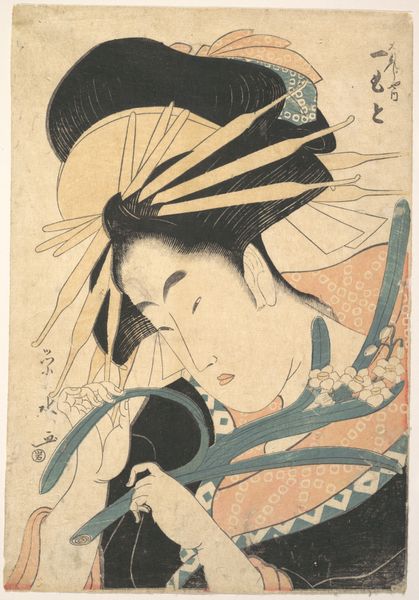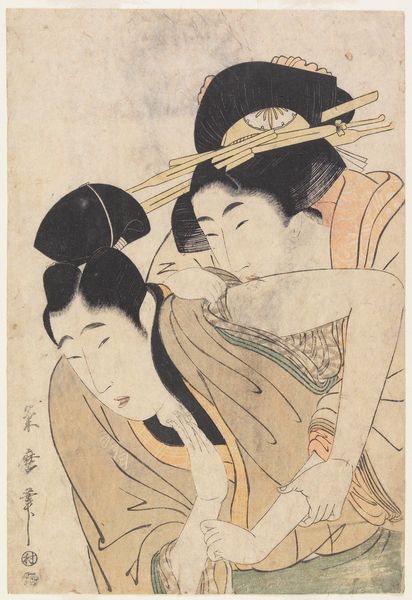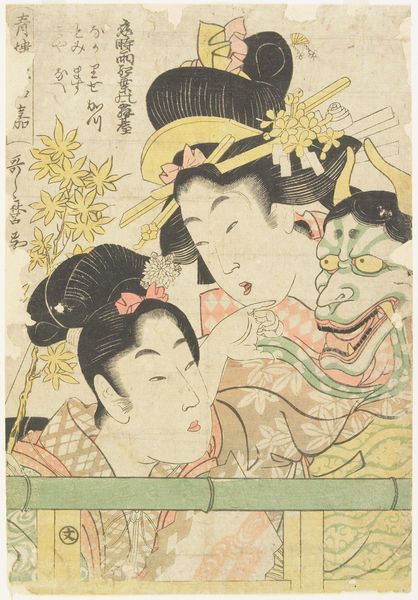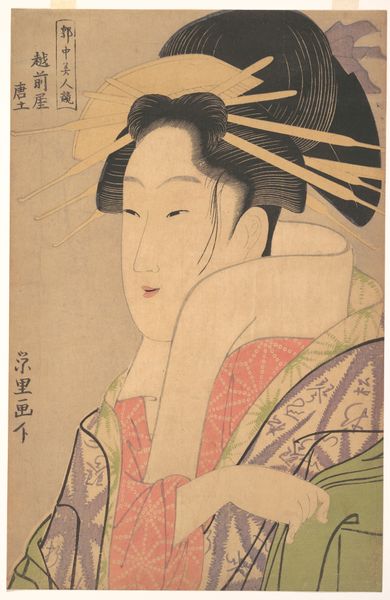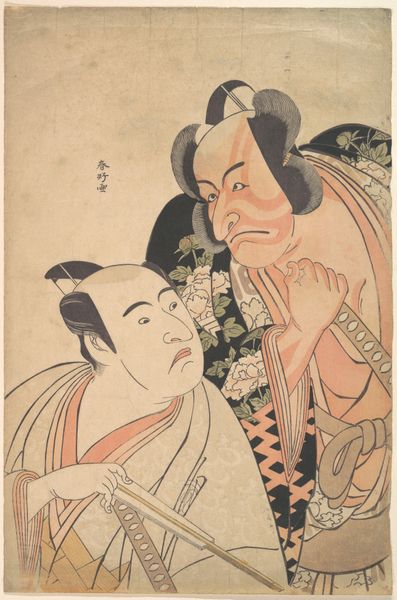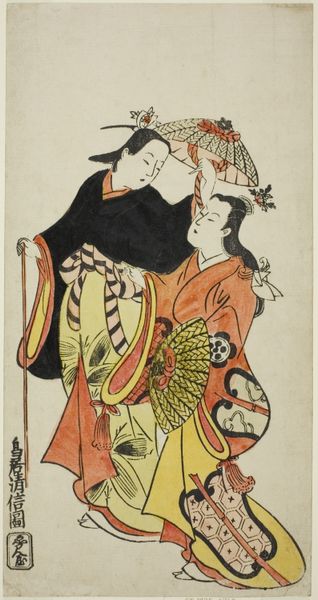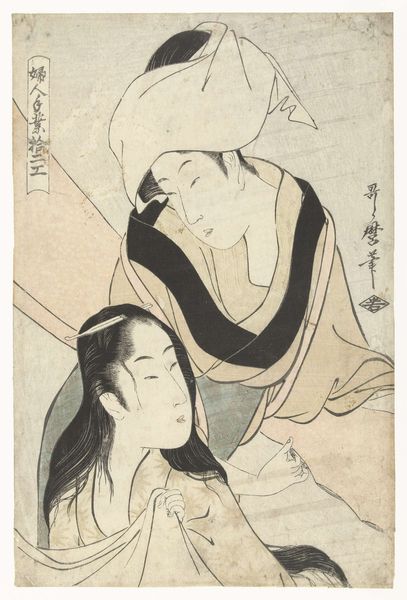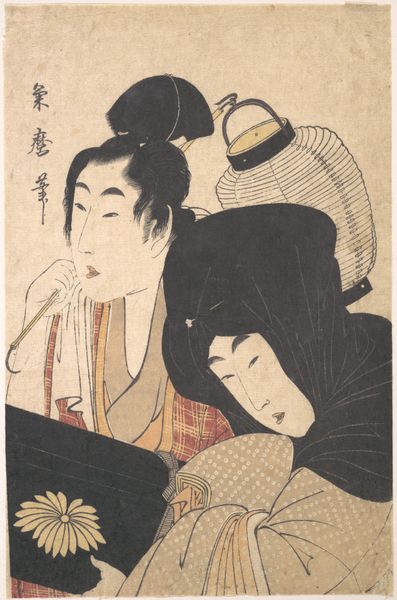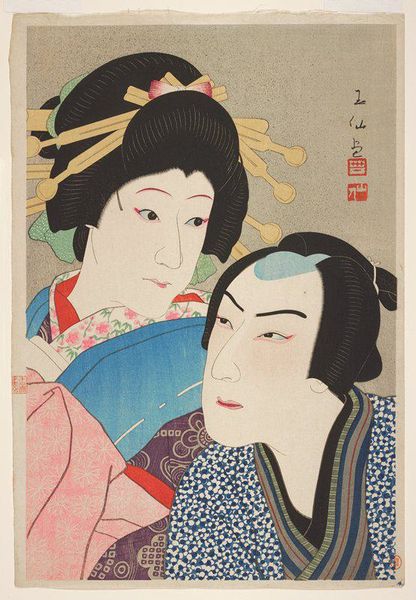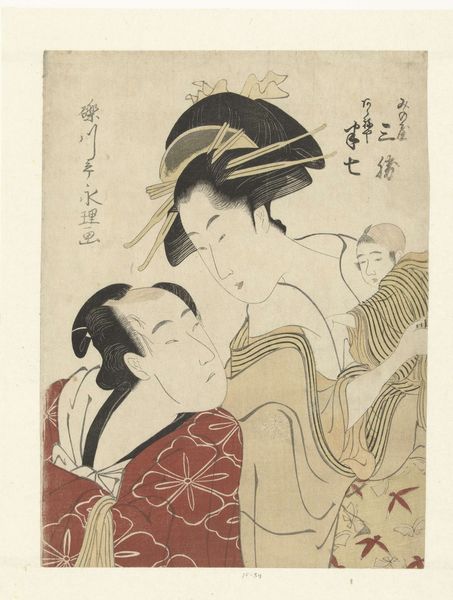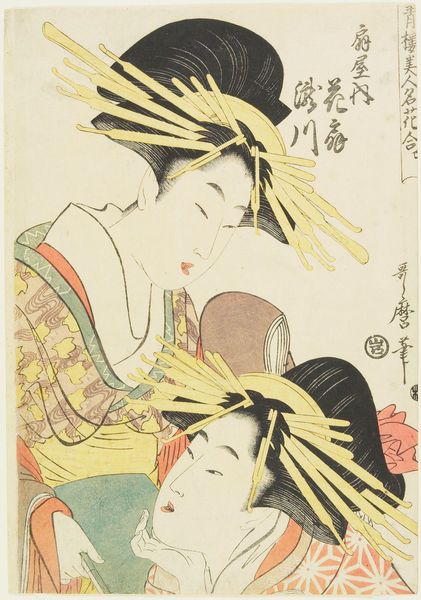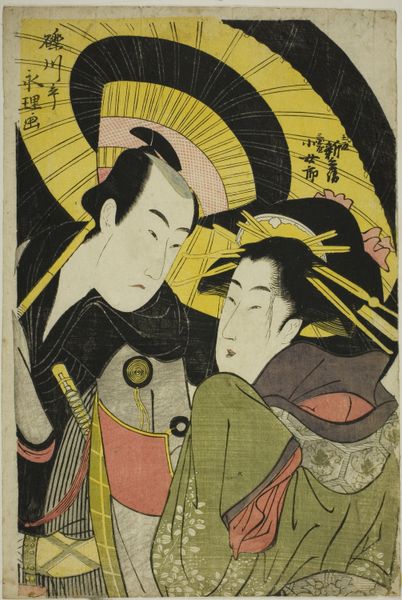
The actors Segawa Tomisaburo II (R) as Yadorigi, wife of Ogishi Kurando, and Nakamura Manyo (L) as the servant Wakakusa 1794
0:00
0:00
print, woodblock-print
#
portrait
# print
#
asian-art
#
ukiyo-e
#
figuration
#
woodblock-print
Dimensions: 36.4 × 24.6 cm
Copyright: Public Domain
Curator: Look at this captivating print, "The actors Segawa Tomisaburo II as Yadorigi, wife of Ogishi Kurando, and Nakamura Manyo as the servant Wakakusa," crafted in 1794 by Tōshūsai Sharaku. Currently, it resides at The Art Institute of Chicago. Editor: Immediately, I'm struck by the striking, almost unsettling expressions on their faces, a kind of intense focus rendered with these exaggerated features. What's happening with the materials here, what kind of woodblock printing techniques are at play? Curator: This work belongs to the ukiyo-e tradition, emphasizing a "floating world" aesthetic, catering to the merchant class’s interest in Kabuki theatre. Note how the choice of portraying popular actors elevates the public image of performers. It's shrewd marketing. Editor: So, the production of celebrity culture here becomes intrinsically tied to woodblock prints as the mass-produced, reproducible medium, and they are not inherently mutually exclusive, and they reinforce each other. You can almost imagine these prints becoming popular items sold after a performance to fuel that very fandom. I can tell there are varying textures to the costumes and backdrop... how is this accomplished through printing alone? Curator: The layering of different woodblocks, each carved meticulously, allowed for that intricate control of color and texture. Look at the brocade patterns and the subtle gradients in their skin tones. The skill of the artisans involved in carving and printing was fundamental. This wasn’t just Sharaku's vision, it's also a testament to collective craftsmanship. Editor: True, these aren’t simply commodities either; labor is inherently part of their worth. Beyond that, there’s a deliberate theatricality here beyond simply a visual record. I’m wondering if their stark expressions relate directly to the play they’re portraying, drawing the viewer in through drama beyond visual aesthetic. Curator: Absolutely. Sharaku deliberately captured the heightened emotions of the Kabuki stage, connecting the performances to a wider viewing public. The popularity of these prints fueled interest in seeing those actual stage performances. Editor: Examining it through materiality and its making brings attention to labor but it's the public portrayal of art itself that speaks volumes. Curator: Agreed, analyzing art through different lens broadens our insight!
Comments
No comments
Be the first to comment and join the conversation on the ultimate creative platform.

